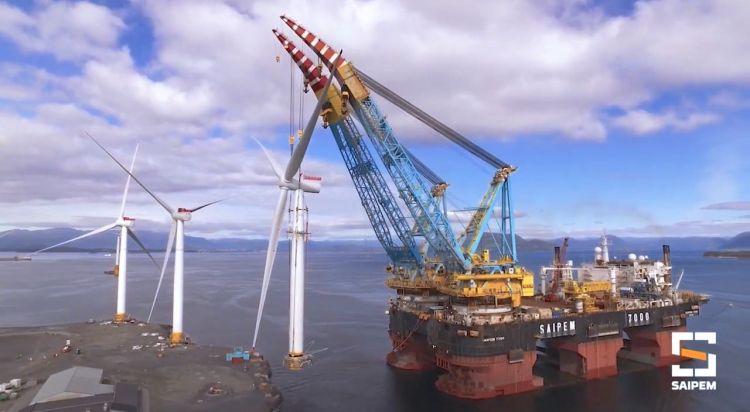
This article series is sponsored by Saipem and went through our normal editorial review process.
In September 2015, all 193 member nations in the United Nations General Assembly adopted the Sustainable Development Goals (SDGs) codifying a pathway to a more sustainable, equitable and peaceful world by 2030. Succeeding the Millennium Development Goals (MDGs) that spanned the first 15 years of the 21st century, the 17 SDGs build on the progress and lessons learned from the MDGs.
The United Nations Global Compact is a principles-based framework providing corporate leaders with a voluntary measurement and reporting platform to align their business operations with universal guideposts for “human rights, labor, environment and anti-corruption.”
This global multinational-corporate partnership aims at putting “boots on the ground” for achieving the SDGs. The Global Compact provides a framework for companies to do just that. The voluntary process allows the flexibility for companies to focus their core competencies on applicable goals, develop best practices and report their progress back to the global community.
Saipem committed to the Global Compact
In October of 2016, Saipem, an Italian energy services company, was formally accepted into the Global Compact. Operating in 62 countries with more than 32,000 employees representing 120 nationalities, Saipem’s participation in the Global Compact represents a determined commitment to cultivating and maintaining its social license to operate in a challenging industry.
Operating in the energy sector, that for its nature generates social and environmental effects in their countries of operations, Saipem’s commitment demonstrates its willingness to play a role in minimizing those effects.
Value Creation and SDG8
Promote sustained, inclusive and sustainable economic growth, full and productive employment and decent work for all.
-- Preamble, Sustainable Development Goal 8
Operating in nearly all global oil and gas markets, Saipem uses SDG8 as a “compass” for sustaining their ongoing mission of creating economic and development opportunities in local communities all over the world.
Quantifying shared economic benefit between local inhabitants and global enterprise is a way to represent the so-called value creation.
With the principles of SDG8 as a guidepost, Value Creation is the cornerstone of Saipem’s sustainable business model.
As required by the Global Compact, Saipem’s Communication on Progress (CoP) report reflects the company’s commitment and continuing progress in measuring, assessing and implementing operational standards focused on developing all the available opportunities with a region, most particularly those promoting the well-being and economic empowerment within local communities.
In broad terms, these opportunities include investment in training, knowledge transfer, collaboration with supply chains and subcontractors, capacity building and support of local entrepreneurship. It is important, however, to measure these objectives against a transparent framework of KPIs to both communicate progress to all stakeholders and build on the increased understanding of what is working and what may need adjustment.
Model and measure contributions to socio-economic growth
More traditional methodologies used for quantifying Value Creation typically calculate only the immediate components of total impact, including employment, local purchases and taxes paid to local governments. But these methods don’t reach far enough, underestimating “the overall real impact and the potential benefits of [Value Creation] strategies.”
Saipem has met this challenge by developing the SELCE (Saipem Externalities Local Content Evaluation) and REVALUE models, tools for a more and more transparent communication approach towards its all stakeholders.
Saipem seeks to capture a more holistic picture of Value Creation by taking into account the synergies between all stakeholders within its scope of operations. It does this through the Saipem Externalities Local Content Evaluation (SELCE) Model. By consistently applying this model, the company captures an in-depth evaluation of the overall positive economic impact on the local community.
Total value: REVALUE
Every business ledger balances revenue against expense in order to understand the real value of its operation. It is no different when calculating the ledger for the triple bottom line. Saipem’s REVALUE MODEL balances with the SELCE to arrive at Real Value.
This process expresses the total Value Creation of Saipem’s impact by taking both the positive and negative outcomes of the activities. Applying these methodologies creates a model for others to follow, making Saipem an industry leader within the U.N. development framework.
A step ahead
In a statement on the Global Compact website, Ms. Lila Karbassi, chief of programmes for the Global Compact talks of, as many others have, the consequences of short-sightedness:
“...it is not enough for companies to concern themselves only with short-term profits because natural disasters, social unrest or economic disparity can damage long-term prosperity. The businesses that understand this challenge and take action will be a step ahead.”
Too many companies continue to see sustainability, in all its forms, as a fad or--at best--a cursory concern to be dealt with once and then handed off to PR. In the end, this kind of half-hearted effort is to engineer public perception, thus avoiding any real transparent effort for achieving measurable impact, serves no one, at least not for long.
In the coming years and decades, these organizations risk losing their social license to operate, as well as any market advantage they assumed by ignoring the long-term consequences in so doing.
Through innovative methodologies, transparency and sustained commitment, companies like Saipem play an increasingly crucial role in solving this complex puzzle and slowly steering the global community toward positive outcomes for generations to come.
Image courtesy of Saipem

Tom is the founder, editor, and publisher of GlobalWarmingisReal.com and the TDS Environmental Media Network. He has been a contributor for Triple Pundit since 2007. Tom has also written for Slate, Earth911, the Pepsico Foundation, Cleantechnia, Planetsave, and many other sustainability-focused publications. He is a member of the Society of Environmental Journalists














